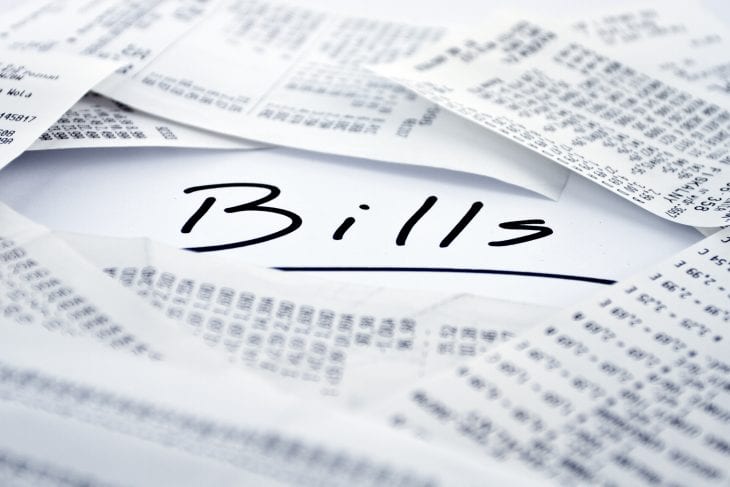If I’ve learned anything from watching “Celebrity Rehab With Dr. Drew,” it’s that the sole act of going to rehab doesn’t make for full-on rehabilitation. Well, that and that Tom Sizemore is all kinds of crazytown. If you need help kicking a drug, sex or alcohol problem, call the good folks at Betty Ford or Promises Malibu (Dr. Drew’s celeb rehab track record, not inspiring a whole lot of confidence). If a low credit rating’s your problem, call Manisha Thakor, personal finance expert and featured financial counselor in The Frisky’s “Therapy For Your Pocketbook” video series. She’ll help you get high (because in credit score land, “high” is a good thing) with these three simple steps, which drive a whopping 80 percent of your credit score.

Source: inc.com
Step One: Pay Your Bills On Time
Yep, it’s just that easy. Paying your bills—all of them from credits cards to library fines—on time is a key driver behind your credit score, Thakor says, explaining that the logic here is that if you can’t manage something as simple as paying your bills on time, you probably aren’t a very good candidate for a new line of credit. Your history of “on time” payments will drive 35 percent of your credit score, so if you pay a bill late, you could see your credit score drop by 50 to 100 points. Whoa, right? The good news, however, is that if you maintain a clean record for at least six months of paying those bills on time your credit score will rise again to reflect that, Thakor adds. So open your bills the minute they come in, and send that check out ASAP. Or, even easier, sign up for online automatic bill pay and let your computer do the work for you. If you want to know more about how your payment history can impact your credit score, click here for more information.

Source: churific.com
Step Two: Keep Your Debt Utilization Ratio Low
Did we lose you at “debt utilization ration”? No worries. In plain English, it means how much you owe relative to your outstanding credit limit. So, if all your credit cards combined have a total spending limit of $10,000 and you have a total revolving balance of $5,000, you have a “credit utilization ratio” of 50 percent, Thakor explains. The way credit card companies and lending institutions see it, if you have a high utilization ratio, you are probably living pretty close to the edge of your means and therefore have limited wiggle room if something goes wrong, thus making them reluctant to give you more credit. “Ideally, you want to keep this ratio to 30 percent or less,” she advises. Your debt utilization ration accounts for 30 percent of your credit score, and—no shocker here—the higher your utilization ratio, the lower your credit score. The bottom line: even though Bloomingdale’s has given you a line of credit fit for Melania Trump, it doesn’t mean you should use it like Lindsay Lohan. Spend only what you can afford to pay off at the end of each month, and keep yourself in line by declining offers to raise your cards’ maximum spending limits.

Source: gobankingrates.com
Step Three: Keep Your Oldest Credit Card Open
As with other things in life, when it comes to your credit score, size—and length—does matter. The longer your credit history, the better, Thakor says. This, ironically, is one reason why it is good to have one credit card early on in your adult years that you use responsibly (meaning, at the risk of sounding like a broken record, only charging items on it that you can afford to pay off on time and in full). Thakor explains that the more years of a credit history you have on the same credit card, the better the credit bureaus feel they have gotten to “know” you, as they’ve seen a longer history of your spending and payment habits. Just like an old pal, they’ve seen our best and worst, and if you’ve shown a long history of conscientiousness, it will reflect in a credit rating that would make any lending institution want to be your BFF. So, if you’re doing some spring cleaning of your finances, Thakor advises keeping your oldest cards open and weeding out the newer ones instead.
Original by Chelsea Kaplan
